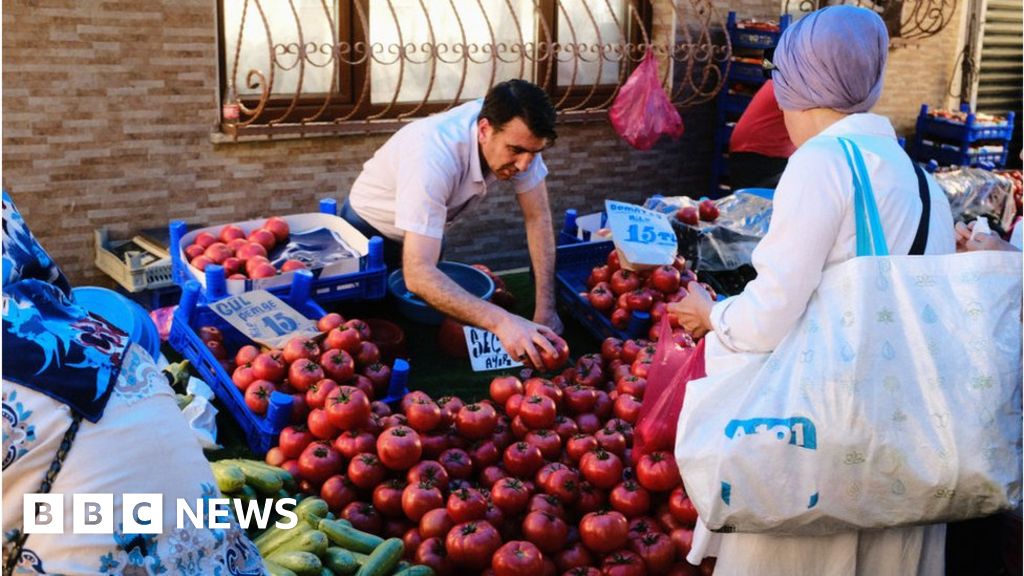Türkiye Humanitarian Needs and Response Overview – Interim Update (Published 11 April 2023) [EN/TK] – Türkiye
Situation Overview
At 4.17 a.m. on 6 February 2023, a 7.8-magnitude earthquake struck close to Gaziantep city in southern Türkiye, the most powerful earthquake recorded in the country since 1939. A second earthquake with a magnitude of 7.6 occurred some nine hours later, with its epicentre approximately 70 km from the first earthquake, near Ekinözü city in Kahramanmaraş province. On the same day, with the earthquakes having caused widespread destruction of houses and infrastructure in urban centres and rural areas across the country, the Government of Türkiye issued a level four alarm calling for international assistance.
As of 5 April 2023, Türkiye’s Disaster and Emergency Management Presidency (AFAD) reported that the death toll from the devastating earthquakes on 6 February has reached 50,3391 (including at least 6,600 Syrians present in Türkiye), and 107,204 people injured. Some 3 million people have become relocated, and more than half a million buildings have sustained damage, of which at least 298,000 buildings have either collapsed or have been severely damaged.3 On 16 February, the international humanitarian community launched a Flash Appeal requesting US$1 billion to enable humanitarian partners to complement and support the government-led response over an initial three months. As of 6 April 2023, the 2023 Türkiye Earthquakes Flash Appeal, requiring $1 billion to assist 5.2 million people, was funded at 28 per cent with $284 million received. The humanitarian community has quickly mobilized to deliver a coordinated response, delivering life-saving aid and protection assistance to people in the most impacted locations.
This document provides a comprehensive overview of needs, response, gaps and priorities for the remaining period of the Flash Appeal until 17 May 2023.
Interim Update
Impact on People
On 6 February 2023, two devastating earthquakes, measuring 7.7 and 7.6 magnitude on the Richter Scale, struck Pazarcık and Elbistan in Kahramanmaraş, Türkiye. The earthquakes – and more than 22,000 aftershocks – have caused catastrophic damage. More than 50,000 people have lost their lives in Kahramanmaraş, Gaziantep, Şanlıurfa,
Diyarbakır, Adana, Adıyaman, Osmaniye, Hatay, Kilis, Malatya and Elazığ provinces and some 107,000 people have suffered injuries. The earthquake hit communities at the peak of winter, leaving millions of people homeless and relocated, without immediate access to emergency shelter, food, water, heating, warm clothing and medical care in freezing cold temperatures.
More than 298,000 buildings have been severely damaged or destroyed,4 forcing some 3 million people 5 to relocate, but where people are living is a significant factor in their needs and the type of response they have received. An estimated 1.6 million people are residing in informal settlements,6 mostly in makeshift shelters or tents with extremely basic living conditions and limited or no access to services. Despite having received some relief support, families in this context still need improved shelter and basic household items assistance as well as improved water and sanitation services. Harsh winter conditions made circumstances challenging and, compounding the situation, in mid-March, torrential rains caused flash floods in Adıyaman and Şanlıurfa, two cities that were already impacted by the earthquakes, killing 21 people and exacerbating already challenging conditions for the people living in informal sites, with many tents inundated by floodwaters.
People’s health needs remain high at a time when the health system has been significantly stretched. Injuries and illnesses caused by the earthquake have required urgent and ongoing care, while people with chronic health conditions experienced disruptions to care. Hospitals and other clinical facilities have been damaged or destroyed, with children, women, older people and people with disabilities particularly impacted. Disease surveillance remains high as conditions are suitable for infections and communicable disease outbreaks, including airborne and waterborne diseases. Thousands of pregnant women are living in the affected areas and many have given birth; many more will give birth under difficult circumstances, returning home with their newborns to tents without adequate water, sanitation or space for breastfeeding.
Some 2.5 million children are affected and need specific humanitarian assistance for their needs. Children have been exposed to a multitude of traumatic events, including relocation, loss of home, disruption to schooling, death of parents, relatives or friends, and injuries and other health problems. The earthquakes have left many children without a home or parents: at the end of March, 1,915 unaccompanied children have been identified, of whom 1,750 have been reunified with their families.7 Families under stress may resort to negative coping mechanisms affecting children such as child marriage, child labour, removal from school/education, increased cases of abuse targeting children, engagement in high-risk activities or begging.
Adolescents have unique developmental and protection concerns affecting their well-being. Faced with relocation, disruption to their education, training and employment, and taking on new roles as caregivers, older children, both girls and boys, face risks to their safety associated with crowded living conditions in tent or container cities. Older children are at risk of forming addictions or engaging in risky behaviours as a way of coping with trauma.
In the aftermath of the earthquakes, school was cancelled for students in the affected areas, with nearly 4 million children (including 350,000 refugee8 and migrant children) experiencing disruption to their education.9 Assessments have indicated a priority need for psychosocial support for children and teachers, and an urgent need to repair damaged schools, ensure teachers’ and children’s safety and establish temporary learning spaces.10 Addressing these priorities will minimize disruption to children’s learning and development, ensure health and psychosocial issues are treated, and decrease women’s increased care burden resulting from children not going to school.
Türkiye hosts the largest refugee population in the world. More than 1.7 million of the 14 million people registered in the 11 most impacted provinces are refugees (predominantly Syrians under Temporary Protection, or International Protection Applicants and Status holders from other nationalities), half of whom are women and girls. Social cohesion issues need to be addressed in the humanitarian response, particularly in provinces with a higher refugee population such as Gaziantep, Killis and Şanlıurfa, and in Hatay, the most affected province. A significant number of refugees living in the 11 provinces have been relocated because of the earthquake. The Presidency of Migration Management (PMM) reported that as at 4 April 2023, a total of 145,874 travel permits had been issued to refugees, enabling them to reside temporarily outside their province of registration.
Women and girls have been affected in specific ways, and there is a real risk of deepening pre-existing inequalities.
Women and girls face particular challenges in term of access to essential services and vital relief items, to remain safe and to cover their basic needs for appropriate shelter, hygiene and sanitation, healthcare and protection. Due to traditional norms, women tend to have fewer income-generating opportunities and thus experience increased risk of poverty.11 This is particularly the case for women with specific needs such as those who are pregnant and breastfeeding, who are single and single mothers, with disabilities, from rural areas and/or refugees or migrants. Privacy arrangements, gender-segregated spaces and proper lighting for shelter and sanitation facilities are needed urgently. Women also need specific food items for infants, menstrual products, maternal, sexual and reproductive health services (SRH), legal services and psychosocial support services (PSS).12 Partners have also indicated that having more female aid workers and frontline responders on the ground is critical, while channelling more funding and responsibilities for the response through local women’s organizations are also needed.13
Addressing health and psychosocial support for children and adults is an urgent challenge that will need to continue after the humanitarian phase has ended. Children at the ages of preschool and elementary school suffer from earthquake trauma and may experience fear, causing developmental retardation and some psychological issues. The extent to which children are affected by earthquakes varies according to their age, sex, and developmental stage, post-earthquake changes in their lives, their losses, and their relationships with their families.
People with disabilities are particularly impacted by the earthquakes, including those with new disabilities due to the earthquakes. They are also more likely to be psychologically affected by the disaster due to the lack of specialized services and increased barriers in accessing service providers, as well as increased marginalization and dependence on other community members. Prior to the earthquakes, an estimated 8 per cent of women and girls, and 6 per cent of men and boys in Türkiye lived with disabilities, with this figure rising after the disaster. Many people with disabilities, including refugees and migrants, lost their assistive devices/mobility aids in the earthquakes, limiting their mobility and access to information and services, including health, education and protection, increasing their risks of violence, especially for women and young people with disabilities.14
Older people are also particularly vulnerable in the aftermath of disasters, often requiring support due to the inaccessibility of basic and specialized services and other individual reasons related to their impairment or health conditions. Moreover, reaching evacuation areas and being assigned accommodation; receiving information in appropriate methods; accessing food, water and medical care is another barrier faced by older people during emergencies. Unaccompanied older people, especially older women, are one of the primary vulnerable groups, comprising about 7 per cent of the population in the affected areas.15 In some instances, due to the widespread loss of life, older people have become primary caregivers of child dependents.16
Disclaimer
- UN Office for the Coordination of Humanitarian Affairs
- To learn more about OCHA’s activities, please visit

![Türkiye Humanitarian Needs and Response Overview – Interim Update (Published 11 April 2023) [EN/TK] – Türkiye Türkiye Humanitarian Needs and Response Overview – Interim Update (Published 11 April 2023) [EN/TK] – Türkiye](https://reliefweb.int/sites/default/files/styles/large/public/previews/8e/65/8e65a6e3-9df1-4af0-89c2-2d6083093d3c.png)


